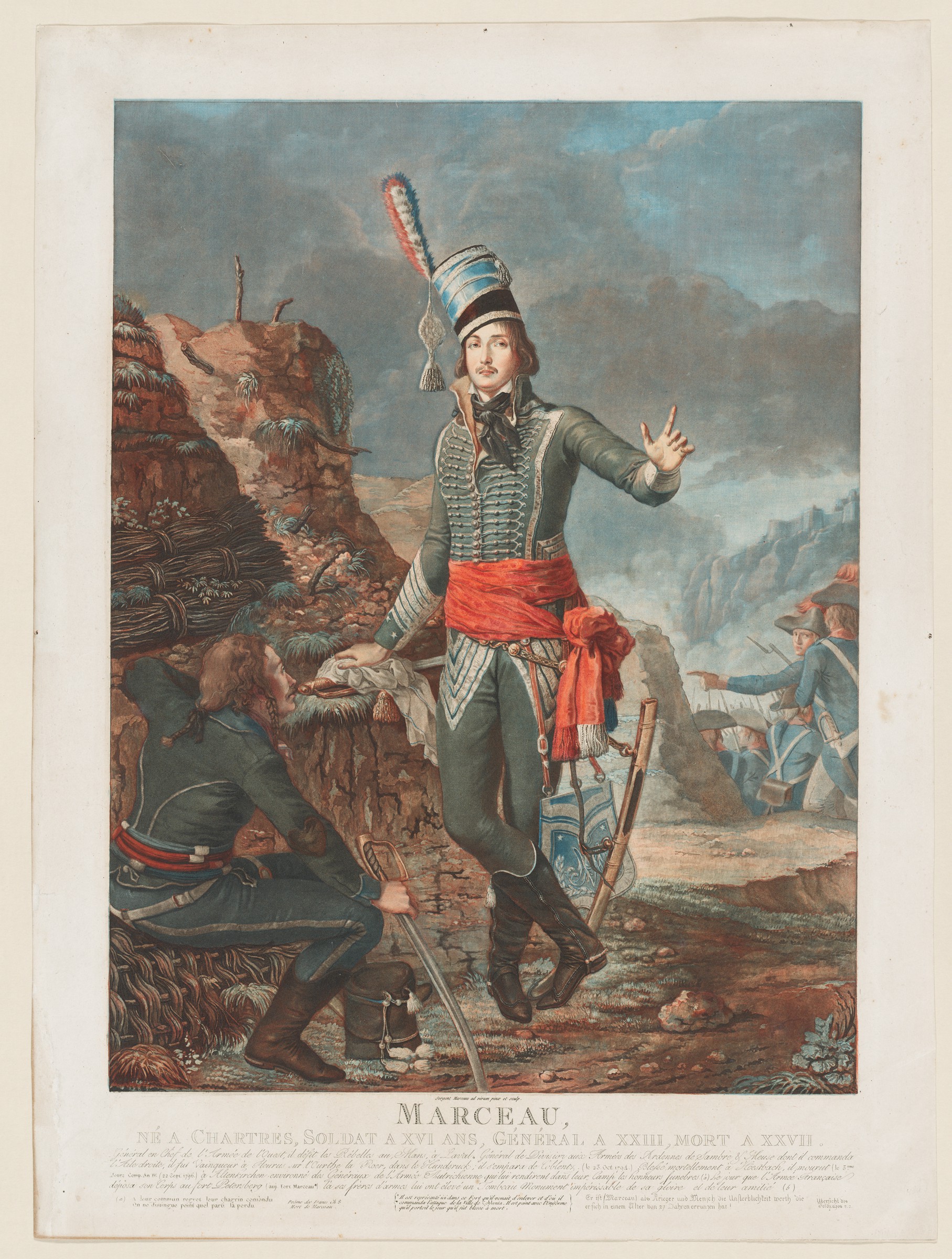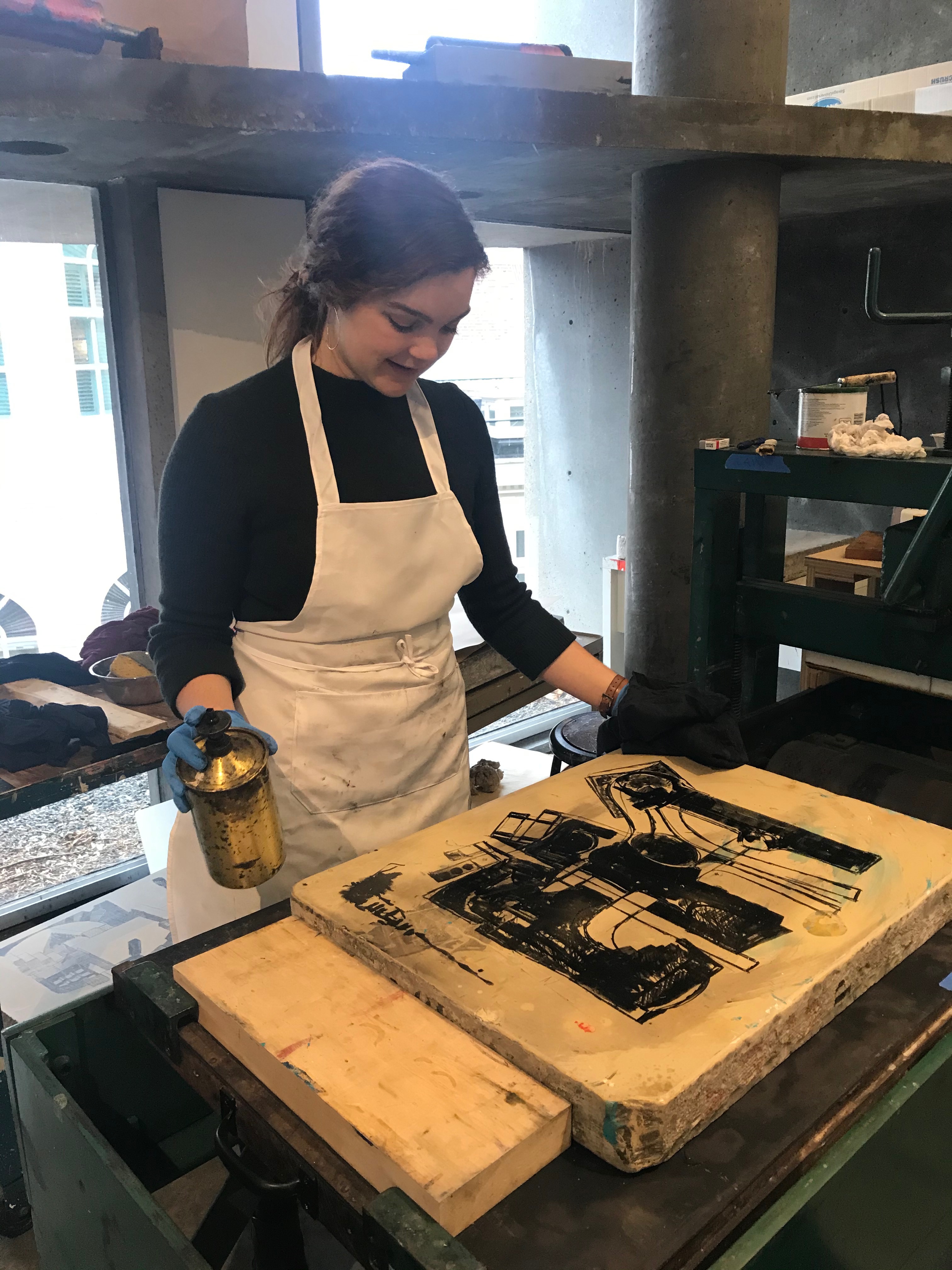Sarah Lund is a Ph.D. candidate in the Department of History of Art and Architecture and a former graduate student intern at the Harvard Art Museums. This article draws from her dissertation in progress, which examines the work, materials, and political engagement of French female printmakers from 1789 through the early 19th century.
[1] This vignette recounts my experiential research in printmaking. I learned and experimented with traditional intaglio techniques in the Harvard seminar Critical Printing, taught by Jennifer Roberts and Matt Saunders in Fall 2019. Maya Jasanoff’s seminar Narrative History, taken the same semester, sparked the first iteration of this article and its narrative style.
[2] See Robert Darnton, Philippe Minard, and Jacques Rychner for the location of press, the number of staff, the displays, and how it was common for a printer to also serve as a shop: Robert Darnton, The Great Cat Massacre and Other Episodes in French Cultural History (New York: Basic Books, 2009), 75–106; Philippe Minard, “Agitation in the Work Force,” in Revolution in Print: The Press in France, 1775–1800, ed. Robert Darnton and Daniel Roche (Berkeley and Los Angeles: University of California Press, 1989), 109–14; Jacques Rychner, “Le travail de l’atelier,” in Histoire de l’édition française, t.ii: Le livre triumphant, ed. Henri-Jean Martin, Roger Chartier, and Jean-Pierre Vivet (Paris: Promodis, 1984), 42, 53. Pierre Blin, publisher of Portraits des grands hommes, femmes illustres, owned the press and shop located at 17 Place Maubert, as indicated on the prints themselves. While I am not certain that Sergent and Cernel completed their work in his shop, it was common for engravers to work in their publisher’s space, as Rychner discusses on p. 53. With regard to the street debates of printed works, scholars like Eirwen Nicholson have noted the theatricality of crowds blocking sidewalks in front of printsellers’ shops. Eirwen E.C. Nicholson, “Consumers and Spectators: The Public of the Political Print in Eighteenth-Century England,” History 81 (261) (1996): 16–17.
[3] Émira is the name she gave herself, which first appears formally in the record as linked to her submissions to the 1793 Salon. Gaïte Dugnat and Pierre Sanchez, Dictionnaire Des Graveurs, Illustrateurs Et Affichistes Français Et étrangers (1673–1950), vol.1 (Dijon: Echelle De Jacob, 2001), 463. However, the majority of catalogues list her works under the name “Marie de Cernel” or “Marie Desgraviers Marceau Sergent.” M. C. M. Simpson and Sergent Marceau, Reminiscences of a Regicide: Edited from the Original Mss. of Sergent Marceau, Member of the Convention, and Administrator of Police in the French Revolution (London: Chapman and Hall, 1889) forms the main biographical source. This work records the reflections of Antoine-François Sergent on the revolution, as recounted to an English couple, Mr. and Mrs. Davenport, during the end of Sergent’s life in Nice. The entire second chapter of the work focuses on Émira and her early life, 7–30. I am careful to consider that Émira herself was no longer alive when her husband’s words were recorded. Other key biographical sources include Pierre Larousse, Grand dictionnaire universel du XIXe siécle, vol. 14 (Paris: Administration du grand dictionnaire universel, 1875), 588; Ralph Nevill, French Prints of the Eighteenth Century (London: Macmillan and Company, 1908), 65–68; Noël Parfait, “Sergent (Antoine-François) et Marie-Jeanne-Louise-Françoise-Suzanne Marceau Desgraviers son épouse; en premières noces, femme Champion De Cernel,” in Le Bulletin des beaux-arts: France de 1500 à nos jours (Paris: Fabré, 1884–85), 71–78; MM. Le baron Roger Portalis and Henri Béraldi, Les graveurs du dix-huitième siècle, vol. 1 (Paris: Damascène Morgand et Charles Fatout, 1880–82), 348–54 ; MM. Le baron Roger Portalis and Henri Béraldi, Les graveurs du dix-huitième siècle, vol. 3 (Paris: Damascène Morgand et Charles Fatout, 1880–82), 537–46.
[4] Simpson and Sergent Marceau, Reminiscences of a Regicide, 9–11, discusses her having read Rousseau and her practice of writing notes on her reading. I have thus far been unable to locate the published version of her reading notes, Glanures dans le champ de la verité, in any library catalogue, including the Bibliothèque nationale de France. The source is also mentioned in Émile Bellier de la Chavignerie and Louis Auvray, Dictionnaire général des artistes de l’école française depuis l’origine des arts du dessin jusqu’à nos jours: architectes, peintres, sculptures, graveurs et lithographes, vol. 2 (Paris: Librairie Renouard, 1885), 494, and Octave Teissier, “Iconographie du Bailli de Suffren,” in L’art: revue mensuelle illustrée 61, vol. 2 of the third series (1902), 509.
[5] For additional information on the series Portraits of Great Men, see Margaret Morgan Grasselli, Colorful Impressions: The Printmaking Revolution in Eighteenth-Century France (Washington, D.C.: National Gallery of Art, 2003), 136–37.
[6] Émira Sergent Marceau, Emira Marceau-Sergent, sœur aînée du Gal. Au citoyen Guillard, . . . en réponse à un passage de son opinion sur les testamens militaires (Paris: Patar-Jouannet, 1798); Émira Sergent Marceau, Réponse . . . au discours pronocé au Conseil des Cinq-Cents, le 17 messidor, par le citoyen Guillard (Paris: Fauvelle et Sagnier, 1799).
[7] For Émira’s 1811 letter, see Archives Nationales AF/IV/1468.
[8] Portalis et Béraldi, Les graveurs, vol. 1, 349.
[9] UCL Art Museum’s “26 Chronology of the French Revolution.” Peter McPhee’s Liberty or Death: The French Revolution (New Haven, Conn.: Yale University Press, 2016) also provides a key source of revolutionary history.
[10] Many scholars of social history have done important work in considering the fraternization of the public and political sphere that occurred during the French Revolution. See, for example, Dominique Godineau, The Women of Paris and Their French Revolution (Berkeley: University of California Press, 1998); Carla Hesse, The Other Enlightenment: How French Women Became Modern (Princeton, N.J.: Princeton University Press, 2018); Lynn Hunt, ed., Eroticism and the Body Politic (Baltimore: Johns Hopkins University Press, 1991); Lynn Hunt, The Family Romance of the French Revolution (Berkeley: University of California Press, 1992); Joan Landes, Visualizing the Nation: Gender, Representation, and Revolution in Eighteenth-Century France (Ithaca: Cornell University Press, 2018) and Joan Landes, Women and the Public Sphere in the Age of the French Revolution (Ithaca: Cornell University Press, 1988); Paris Amanda Spies-Gans, “Exceptional, but Not Exceptions: Public Exhibitions and the Rise of the Woman Artist in London and Paris, 1760–1830,” Eighteenth-Century Studies 51 (4) (2018): 393–416.
[11] Petition of Women of the Third Estate to the King, 1 January 1789, as reprinted in Mary Durham Johnson, Darline Gay Levy, and Harriet Branson Applewhite, eds., Women in Revolutionary Paris, 1789–1795: Selected Documents Translated with Notes and Commentary (Urbana: University of Illinois Press, 1979), 18.
[12] Ibid., 19.
[13] Biographies of Sergent note his fervor for the revolution and his position as administrator under Robespierre; see note 3 above. Émira’s political leanings are more difficult to decipher, although we can infer that through the support of her brother and her following of Sergent into exile that she was sympathetic to the revolution. Pierre Larousse writes more explicitly in his biography of Émira that she shared with Sergent “her artistic taste and her ardent attachment to the Republic.” Larousse, Grand dictionnaire universel, 588.
[14] Émira made sheets of buttons in 1788, and I believe that an unsigned sheet of political buttons now catalogued under Sergent’s name may also be hers: BnF SNR-3 (Sergent-Marceau, Émira). For further discussion on the button prints, see my presentation “Liberty, Equality, Sorority? A Woman Printmaker in the French Revolution,” Art Talk Live (Harvard Art Museums), given on April 6, 2021.
[15] Johnson, Levy, and Applewhite, Women in Revolutionary Paris, 36–50.
[16] Rêquete des dames l'Assemblée Nationale (1789), trans. by Karen Offen, reprinted in Les Femmes dans le Révolution Française 1789–1794, presentés par Albert Soboul, vol. 1 (Paris, EDHIS, 1982).
[17] See McPhee, Liberty or Death, 119–41.
[18] Hesse, The Other Enlightenment, xviii–xix.
[19] Émira Sergent Marceau and Antoine-François Sergent Marceau, Corps législatif. Conseils des Cinq-Cents. Présentation au Conseil des Cinq-Cents du portrait du general Marceau (Paris: Impr. Nationale, 1798).
[20] From the Moniteur Universel, as quoted in Hunt, Family Romance, 92. Details of Frédegonde’s accusations and assassinations can be found in the text beneath the narrative image, as well as in Louise-Félicité Guinément de Kéralio, Les crimes des reines de France (Paris: L. Prudhomme, 1791), 7.
[21] See McPhee, Liberty or Death, 1–23, for a detailed discussion of the unequal tax structure of ancién régime France, including the gabelle.
[22] Lynn Hunt’s work (see note 10) is the best source for the important discussion of gendered violence and the transition from Marianne to Hercules during the revolution.
[23] Olympe de Gouges, Déclaration des droits de la femme et de la citoyenne, 1791.
[24] Portalis and Béraldi, Les graveurs, 349.
[25] La Gazette de France 92 (Paris: Imprimerie royale, November 22, 1791), 407.







